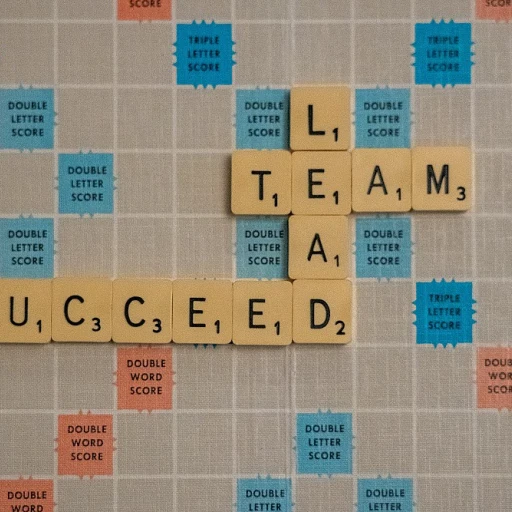
Understanding the Importance of Employee Goals
Recognizing the Value of Goals in Employee Performance
Employee goals are a pivotal component of performance management. They provide a clear roadmap for both employees and organizations, helping to align individual efforts with company objectives.
By setting well-defined performance goals, organizations can help employees to focus on specific areas, improve their skills, and manage their time more effectively. This focused approach enhances the overall work quality and contributes positively to the team and customer satisfaction.
Goals examples in various domains, like soft skills and customer service, showcase how targeted efforts can lead to substantial progress and problem solving within a team.
Moreover, by incorporating SMART goals – Specific, Measurable, Achievable, Relevant, and Time-bound – organizations can ensure that the goals are not only actionable but also aligned with larger strategic plans. A well-structured goal-setting framework ensures continuous improvement and aids in professional development.
Effective goal setting is more than an administrative task; it's about building a culture where employees are motivated to achieve and excel, fostering a healthy work environment.
Aligning Goals with Organizational Objectives
Aligning Goals with the Company Vision
To craft effective employee performance goals, it’s crucial for organizations to align these objectives with their overall mission and vision. This ensures not just individual growth, but also a coherent path toward achieving the company's larger aims. Here’s how you can effectively align goals:- Understanding Company Objectives: Before setting individual goals, it's vital to have a clear understanding of the organization’s strategic priorities. Employees should know how their goals contribute to broader objectives, whether improving customer satisfaction, enhancing team productivity, or driving project success.
- Promoting Transparency: Encourage open communication within teams about organizational targets. This transparency aids employees in setting performance goals that are not only SMART—specific, measurable, achievable, relevant, and time bound—but also aligned with the company's needs.
- Encouraging Collaboration: Inviting employees and team members to take part in goal setting can foster a sense of ownership and accountability. Collaborative goal setting can lead to more aligned goals and better performance management.
- Utilizing Technology: Implementing a Human Resources Information System (HRIS) can help track and manage these goals efficiently. It allows management to monitor progress in real time and adjust as necessary, ensuring both employee and company objectives are met.
Examples of Effective Employee Goals
Defining Clear and Achievable Objectives
Crafting effective employee goals for performance reviews involves creating objectives that are specific, measurable, achievable, relevant, and time-bound (SMART). These goals should not only aim to improve individual performance but also align with the broader organizational objectives. Here are some practical examples to guide employees and management in setting performance goals:- Boosting Customer Satisfaction: Employees in customer service roles can set a goal to enhance customer satisfaction scores by 10% over the next quarter. This requires them to focus on refining soft skills and problem-solving abilities, ultimately benefiting both the employee and the company's reputation.
- Project Management Improvement: Team members working on projects can aim to complete their tasks ahead of the deadline while maintaining quality standards. This performance goal emphasizes effective time management and teamwork.
- Advancing Professional Development: An example of a professional development goal is for employees to attend two workshops or training sessions within the upcoming year, focusing on skills that will contribute to their role and prepare them for future opportunities.
- Enhancing Communication within Teams: Employees might set a goal to reduce misunderstandings or conflict by attending a monthly meeting where they collaborate on projects and openly share feedback. This fosters a more cohesive team environment and helps in achieving team objectives.
Utilizing HRIS for Goal Tracking and Management
Leveraging Technology for Goal Management
Using a Human Resources Information System (HRIS) for goal tracking and management can significantly enhance the workflow of setting performance goals. In the dynamic work environment, it is crucial to have a system that allows both the management and employees to keep track of employee goals and measure progress effectively. An HRIS provides a centralized platform where employee goals are documented, updated, and reviewed regularly, promoting transparency and accountability. Here are some benefits of utilizing HRIS in goal management:- Facilitates Clear Communication: An HRIS ensures that every team member understands the organizational objectives and knows how their individual goals contribute to these broader aims. This transparency helps align goals effectively.
- Track Progress in Real-Time: With an HRIS, employees can regularly update the status of their goals. This feature helps managers stay informed about progress without needing to constantly check in, thus saving time and improving management efficiency.
- Promotes SMART Goals: The system can assist in setting SMART (Specific, Measurable, Achievable, Relevant, Time-bound) goals, ensuring that what is expected from employees is realistic and clearly defined.
- Streamlines Performance Reviews: Having a digital record of goal setting and achievements simplifies performance reviews. It provides concrete examples and data to discuss, making the review process more objective and less subjective.
- Enhances Problem Solving: By offering insights into areas where employees struggle, an HRIS helps in devising strategies for professional development and offers targeted training sessions to improve specific soft skills.
Common Challenges in Setting Employee Goals
Overcoming Obstacles in Goal Setting
Setting employee goals for performance reviews can be a challenging endeavor, often fraught with potential pitfalls. Even with the best intentions, organizations may encounter several common barriers throughout the goal-setting process.- Lack of Clarity and Specificity: Without clear and specific goals, employees can struggle to understand what is expected of them. This ambiguity often leads to misaligned objectives that fail to drive performance. Leveraging SMART goals, which are specific, measurable, achievable, relevant, and time-bound, can help mitigate this issue by providing a well-defined framework.
- Misalignment with Company Objectives: Goals that do not align with the organization's larger objectives can be counterproductive. Ensuring that employee goals contribute to overall company performance is crucial. A thorough understanding of both individual and organizational objectives can bridge this gap.
- Overemphasis on Short-term Achievements: Focusing solely on immediate results can undermine long-term employee development. Balancing short-term performance goals with opportunities for professional growth can benefit both the employee and the organization.
- Inadequate Support and Resources: Employees may struggle to achieve goals if they lack the necessary support or resources. Providing access to essential tools, training, or mentorship can significantly improve progress and outcomes.
- Infrequent Feedback and Review: Regular feedback is vital for effective goal setting and management. Scheduled performance reviews and ongoing communication can help employees stay on track, identify areas for improvement, and adjust goals as needed.
Best Practices for Reviewing and Adjusting Goals
Optimizing and Refining Goals for Continued Progress
In the ever-evolving landscape of employee performance, reviewing and adjusting goals is not just a one-time task. It requires a continuous process to keep team objectives aligned with organizational priorities. Here are some best practices for refining employee goals:- Regular Check-Ins: Scheduling regular performance reviews to discuss progress and adjust goals helps ensure that objectives remain time-bound and relevant. This fosters a proactive approach to achieving performance goals and aids in identifying areas for improvement early.
- S.M.A.R.T. Goals Reevaluation: Periodically revisiting the S.M.A.R.T. criteria (Specific, Measurable, Achievable, Relevant, Time-bound) for goal setting can significantly aid in refining objectives and ensuring alignment with both the employee's professional development and company growth.
- Development of Soft Skills: Encouraging employees to improve soft skills such as communication, problem-solving, and customer service can enhance overall performance management. This also contributes to greater customer satisfaction and team collaboration.
- Feedback Mechanisms: Incorporating consistent feedback from team members and supervisors plays a crucial role in refining goals. Constructive feedback can provide insights into areas that may require adjustments, helping employees to enhance their work performance.
- Adapting to Change: As projects and company goals evolve, being flexible in adjusting employee objectives is critical. It ensures that goals remain aligned with the broader organizational strategy and respond effectively to dynamic business needs.
- Tracking with HRIS: Utilizing an HRIS (Human Resources Information System) for goal tracking and management emphasizes the importance of accuracy in monitoring progress. It aids managers in keeping a streamlined view of individual and team performance objectives.









